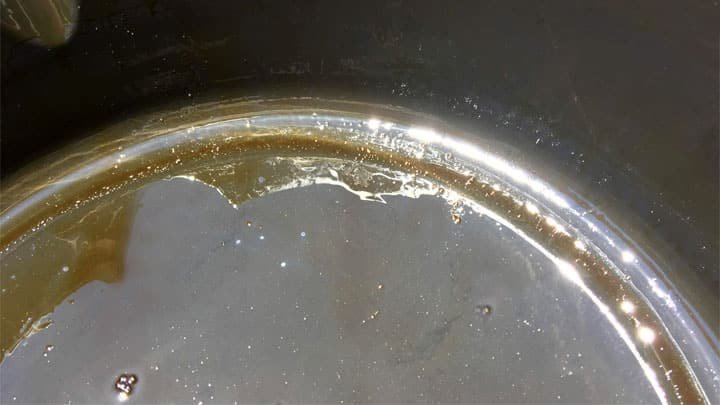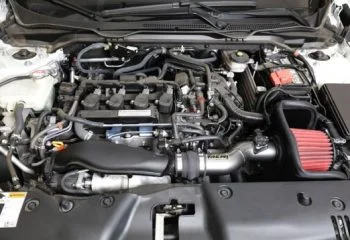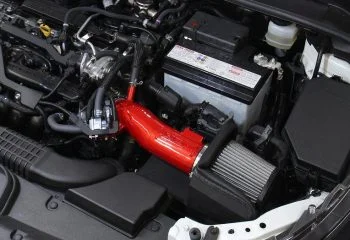If you’re a car owner, then you know that changing your oil is an important part of keeping your vehicle in good condition. But how much metal in oil is normal? And what should you do if you see high levels of metal in your oil?
Normally there should be no metal fragments when you change the oil. Metal fragments in the oil less than 0.0625 inch in diameter in the oil are also acceptable if occasionally present.
If the metal shaving is bigger than that, it’s recommended to check with an automotive specialist. The size of the metal particle could affect the function of the engine if it’s too big.
Metal in oil is often a sign that something is wrong with your car, but most people don’t know what levels are normal and which ones indicate a problem. If you’re seeing metal in your oil, it’s important to take action and figure out what’s going on. Left untreated, too much metal in oil can lead to serious engine damage.
If you’re not sure whether or not the metal in oil reading on your car’s dashboard is normal, it can be difficult to know whether or not you need to take it in for repair. Our guide to understanding how much metal in oil is normal for your vehicle. We’ll also provide tips on how to address any issues that may arise.
What's in this post?
What is metal shavings in oil?
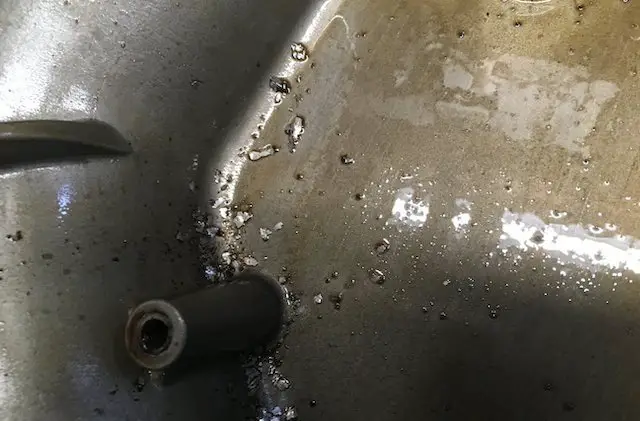
Metal in oil are tiny pieces of metal that can be found in used motor oil. These shavings come from the engine and can be made of various metals, including iron, steel, and aluminum.
Metal shavings in oil can come from a variety of sources, but the most common is engine wear. As metal parts move against each other, small pieces of metal can break off and enter the oil. These metal shavings can then circulate through the engine, causing wear and potentially damaging other components.
In some cases, metal shavings can also come from the manufacturing process, particularly if parts are not machined to proper tolerances. In either case, it is important to remove metal shavings from oil as soon as possible to prevent damage to the engine.
While metal in oil are not instantly harmful to your engine, they can cause problems if they build up over time. If there is a large amount of metal shavings in your oil, it can clog up your filter and cause your engine to run less efficiently. In extreme cases, it can even damage your engine.
To avoid these problems, it’s important to change your oil regularly and keep an eye on the level of metal shavings in your oil. If you notice a significant increase in metal shavings, it’s best to consult a mechanic to see if there is a problem with your engine.
One way to remove metal shavings from oil is to use an oil filter. Oil filters are designed to remove small particles from oil, and they can be very effective at removing metal shavings. However, it is important to note that not all oil filters are created equal.
Some filters may be more effective at removing metal shavings than others, so it is important to choose a filter that is rated for your particular engine. Another option for removing metal shavings from oil is to use an magnetic plug. These plugs are placed in the oil pan, and they help to collect small particles of metal as the oil circulates through the engine
Different types of metal shaving

There are several different types of metal that can be found in oil, and each one can indicate a different problem.
Iron
The most common type of metal found in oil is iron. Iron is a strong metal that is often used in engine components. However, too much iron in oil can be a sign of engine wear.
If you’re seeing high levels of iron in your oil, it’s important to take action to prevent further damage to your engine.
Copper, Bronze, Brass
Copper, bronze, and brass are softer metals that are often used in bearings and other moving parts. These metals can enter the oil if there is wear on these parts.
While it’s not necessarily a cause for concern if you see small amounts of copper, bronze, or brass in your oil, seeing large amounts can be a sign of a problem.
Aluminum
Another type of metal found in oil is aluminum. Aluminum is a softer metal that is often used in engine parts that are subject to high temperatures. While small amounts of aluminum in oil are not typically a problem, large amounts can indicate an issue with your engine.
How does metal get in the oil?
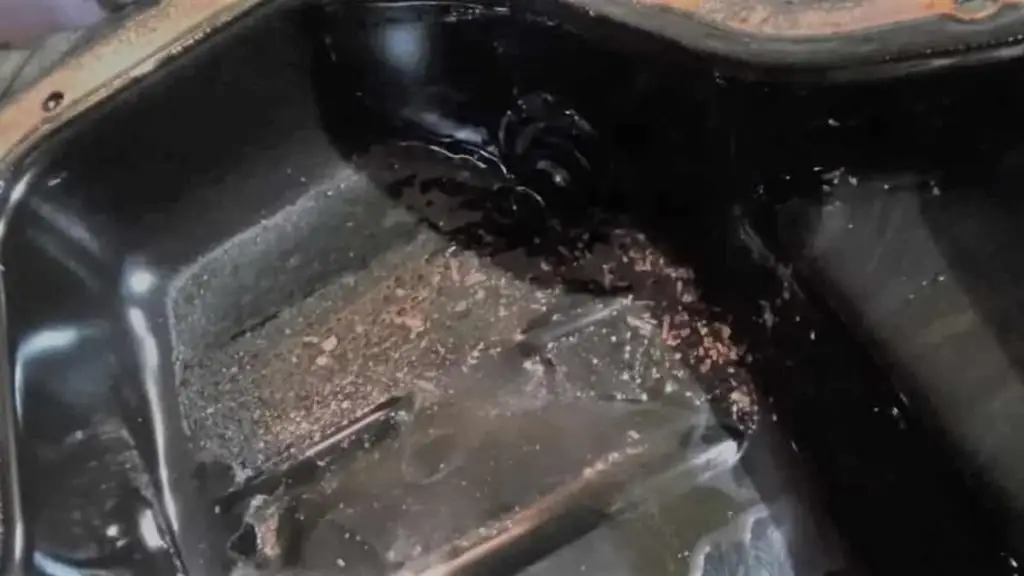
There are several ways that metal can get into your oil. The most common is engine wear.
As metal parts move against each other, small pieces of metal can break off and enter the oil. These metal shavings can then circulate through the engine, causing wear and potentially damaging other components.
In some cases, metal shavings can also come from the manufacturing process, particularly if parts are not machined to proper tolerances.
In either case, it is important to remove metal shavings from oil as soon as possible to prevent damage to the engine.
When do metals appear in oil?
Over time, metal shavings can build up in your engine oil. This is most likely to happen after 10,000 miles of driving.
The metal shavings can come from a variety of sources, including the engine itself, worn-out brake pads, or even metal shavings that have been deposited on the road surface. While metal shavings in your oil is not necessarily cause for alarm, it is something that you should keep an eye on.
If the level of metal shavings in your oil becomes too high, it could cause damage to your engine. Therefore, it is important to check your oil level regularly and to change your oil according to the manufacturer’s recommended schedule.
Useful read: Wrong Oil in Car Symptoms: What Happens and How to Fix It
What is the sign of oil having metal shavings?
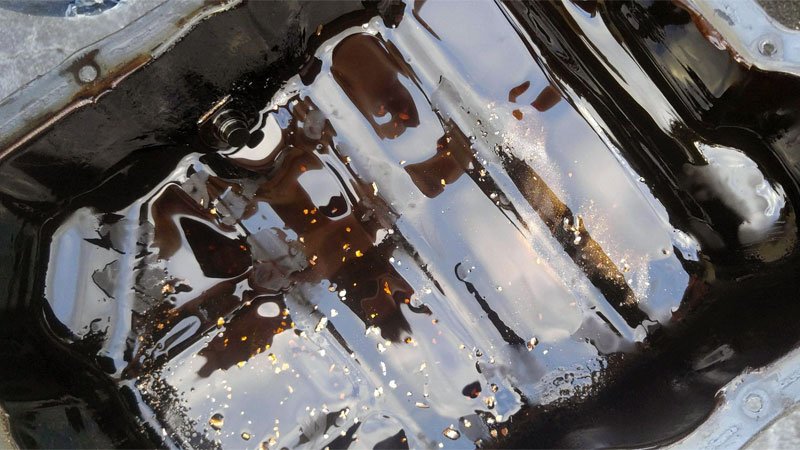
There are many signs that could indicate that your oil has metal shavings in it. We have listed a few of the most common signs below:
- Lower engine power: If your engine oil has metal shavings, it may not be able to lubricate the engine components as effectively. This can lead to a loss of power and decreased performance.
- Increased engine noise: Another symptom of metal in oil is increased engine noise. This is because the metal shavings can cause friction between the engine components.
- Excessive smoke from the exhaust: If there is too much metal in the oil, it can cause excessive smoke to be emitted from the exhaust.
- Oil leaks: Oil leaks can also be a sign of metal in oil. This is because the metal shavings can damage seals and gaskets, causing them to leak.
- Rough idles: Rough idling can also be a symptom of metal in oil. This is because the metal shavings can cause friction between the engine components, making it difficult for the engine to run smoothly.
If you notice any of these symptoms, it is important to have your vehicle checked by a mechanic as soon as possible. Metal in oil can cause serious damage to your engine if it is not addressed promptly.
Useful read: Can You Mix Oil Brands?
How to check metal in oil?
Over time, metal shavings can accumulate in motor oil, potentially causing damage to the engine. Fortunately, there is a simple way to check for metal shavings.
To check for metal shavings in oil, simply place a small amount of oil on a clean white piece of paper. Once the oil has been applied, carefully fold the paper over.
If there are any metal shavings present, they will be visible on the paper.
Another way to check is to look at the oil filter; if there are metal shavings present, they will usually be visible on the filter.
If you suspect that there may be metal shavings in the oil, it is important to have the engine checked by a qualified mechanic. By performing this simple check on a regular basis, you can help to ensure that your engine stays in good working condition.
What to do if there is metal in oil?
If you find metal in your oil, it is important to have the engine checked by a qualified mechanic as soon as possible. Metal in oil can cause serious damage to the engine if it is not addressed promptly.
In most cases, the best course of action is to simply change the oil and filter. This will help to remove any metal shavings that may be present and will also help to prevent further damage from occurring.
If the problem persists, or if there is excessive metal in the oil, it may be necessary to have the engine rebuilt or replaced. This is a much more extensive repair and should only be undertaken by a qualified mechanic.
No matter what course of action you take, it is important to address the problem as soon as possible to help prevent further damage to your engine.
How to prevent too much metal in oil
The presence of metal in lubricating oil is not unusual and is usually not harmful in small quantities. However, if the level of metal contamination rises too high, it can cause wear and tear on engine parts, leading to increased maintenance costs and decreased efficiency.
There are a few simple steps that can be taken to prevent metal contamination from becoming a problem.
- Make sure to use clean, filtered oil when performing routine maintenance on your vehicle.
- Be aware of the types of materials that come into contact with your oil (such as gaskets and seals) and replace them if they show signs of wear or contamination.
- Replace oil filter by the manufacturer’s recommended interval.
- Have your oil professionally tested on a regular basis to ensure that it meets all the necessary standards.
By taking these precautions, you can help to keep your engine running smoothly for years to come.
Useful read: How To Fix Milky Oil In Engine? Is It Too Bad?
FAQs about how much metal in oil is normal
Does metal shavings in oil mean your motor is gone?
No, metal in oil does not mean your motor is gone. When you check your oil, you may notice some metal shavings on the dipstick or in the oil pan. While this may be alarming at first, it’s actually quite common and usually nothing to worry about.
Metal shavings can come from a variety of sources, including the engine itself, the oil filter, or even just from normal wear and tear. In most cases, a few metal shavings in your oil is nothing to be concerned about.
However, if you notice a large number of metal shavings, or if the shavings are accompanied by other symptoms like engine knocking or loss of power, then it’s time to take your car to a mechanic for a closer inspection.
Will oil filter catch metal shavings?
Yes. Oil filters are designed to remove contaminants from motor oil. These contaminants can include debris, carbon deposits, and metal shavings. Most metal shavings will be caught by the filter, but there is a chance that some may slip through.
If you notice an unusual amount of metal shavings in your motor oil, it is advisable to take your vehicle to a mechanic for inspection. Excessive metal shavings can indicate a problem with the engine and should be addressed as soon as possible.
What do shiny metallic particles in the oil indicate?
The shiny metallic particles in your oil are most likely bits of metal that have come off of the engine components. Over time, these metals will wear down and break off into tiny pieces. If you notice an increase in the amount of metal in your oil, it could be an indication that your engine is starting to wear out.
In addition, the oil filter can also trap some of these metal particles, which is why it’s important to change it regularly. If you’re concerned about the amount of metal in your oil, you should consult a mechanic for further advice.
How do you clean metal shavings out of an engine?
To clean metal shavings out of an engine, first remove the oil pan and drain the oil. Then, use a magnet to remove any large pieces of metal from the bottom of the pan. Next, use a small brush to scrub away any smaller pieces of metal that are stuck to the sides or bottom of the pan. Finally, rinse the pan with clean motor oil before reinstalling it.
If you’re not comfortable performing this task yourself, you can take your car to a mechanic and they will be able to do it for you.
How do you remove aluminum shavings?
To remove aluminum shavings, one common method is to use an oil filter magnet, which will help to collect any loose shavings that are floating in the oil. You can also change your oil more frequently than usual, which will help to flush out any remaining shavings.
Finally, be sure to inspect your engine regularly for any signs of wear or damage, as this can help you to identify potential sources of aluminum contamination.
Can you drive with metal shaving in oil?
If you have a small number of metal shavings in your oil, it’s generally safe to continue driving. The metal shavings will eventually make their way through the engine and be filtered out by the oil filter.
However, if you have a large number of metal shavings in your oil, it’s best to have the car checked by a mechanic. A large number of metal shavings can indicate that something is wrong with the engine and continuing to drive may do further damage.
In either case, it’s a good idea to check your oil level regularly and keep an eye out for any unusual behavior from your car. If you’re ever in doubt, it’s always better to err on the side of caution and consult a professional.
Conclusion
Although small amounts of metal in engine oil are normal, anything larger than 1/16 inch should be cause for concern. If you’re seeing more metal in your engine oil than that, it’s time to take your car to a mechanic and find out what’s going on.
If you do have a significant amount of metal in your oil, bring your car to a mechanic as soon as possible for repair.
We hope this article has been helpful in informing you about how much metal in oil is normal. Remember, though, that these are just guidelines and your best course of action is always to consult with a professional mechanic if you have any doubts or concerns about the health of your vehicle’s engine.

